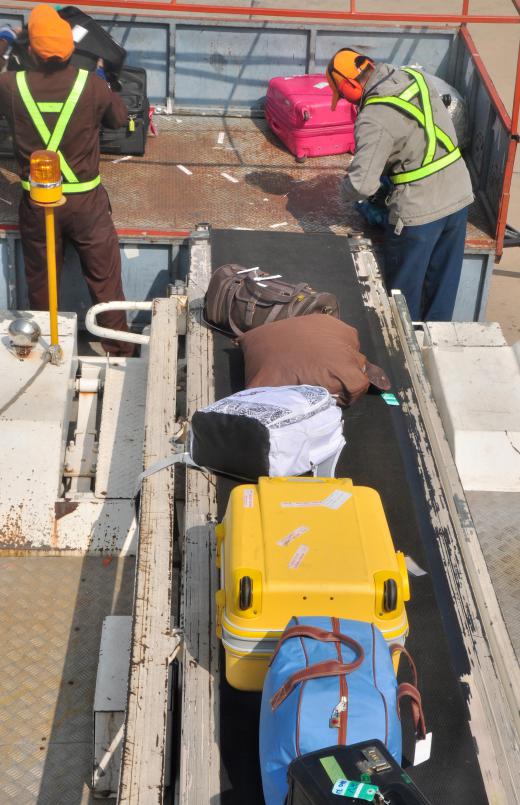One of the first things most travelers do upon arrival at the airport is to check in all of their luggage. Tags are added at the baggage check-in counter, the suitcases are placed on a luggage conveyor belt, and that is the last time most people see their bags until they arrive at their destination. Depending on the system that is in place at a given airport, a luggage conveyor may simply provide support to human baggage handlers by moving the baggage closer to the planes. Alternatively, the baggage-handling system may be almost completely automated and not only move the luggage, but it may also provide routing and tracking information and assistance in locating specific suitcases.
A luggage conveyor system is essentially a series of belts that move baggage through the airport to designated points. In the more advanced systems, bags are routed by a computer network that identifies the tags placed on the luggage at check-in. These tags provide flight information and the computerized system sends each bag to the appropriate baggage-handling point for each flight. Luggage that must be transferred when the passengers change planes are grouped together and are able to be quickly unloaded and re-directed at stopover points.

Most passengers have a very simplified view of what a luggage conveyer consists of, based on the small bits they see at the check-in counter and in the arrival area. A luggage conveyor in a large airport can have miles, or kilometers, of belts, it may be two or more stories high, and it is capable of handling many thousands of suitcases every hour. The belts speed the luggage to the appropriate destinations where everything is loaded into containers that are then loaded onto the airplanes.
Servicing of an airport’s luggage conveyor system is a highly specialized and complex task. The Siemans system that was installed in Madrid in 2006, for example, has over 12,000 parts that need regular servicing. It also has about 59 miles (about 95 km) of belts, including over 1 mile (about 1.6 km) of belts running through a tunnel between buildings. If any part breaks down, the system is set up with enough redundancy that the bags will keep moving to their destinations with minimal delays.
Highly efficient computerized luggage conveyors are essential to most modern airports, especially those with terminals handling dozens of flights at a time. Such systems have turned baggage handling from a logistics nightmare where every bag was handled by hand into a smooth, easy-to-manage task. The result is fewer bags lost and planes that are able to depart on time.
